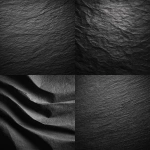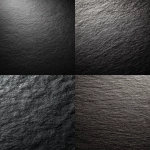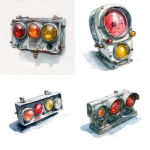Explore the Best AI Image Gallery

Beyond the Canvas: Wearable Tech as a Conduit for Creative Expression
The realm of creativity has always been driven by innovation, constantly seeking new tools and mediums to express ideas and emotions. In recent years, wearable technology has emerged as a transformative force, blurring the lines between the physical and digital worlds and empowering artists, designers, and innovators to explore uncharted territories.
A New Frontier for Artistic Expression
Wearable tech offers artists an unprecedented level of interactivity and immersion. Imagine a painting that reacts to your heartbeat, sculptures that transform with your movements, or musical instruments that translate your emotions into sound. These are just glimpses of the potential that wearable technology unlocks.
Interactive Art Installations: Engaging the Senses
- Wearable sensors can capture real-time data such as heart rate, body temperature, and even brainwaves, translating these physiological responses into dynamic visual or auditory elements within an art installation.
- This creates a truly personalized experience, where each viewers interaction shapes the artwork in real time, fostering a deeper connection between the artist, the audience, and the creative output.
Personalized Design Experiences: Wearable Tech as a Creative Tool
Beyond its role in interactive art, wearable technology is also revolutionizing the design process.
- Designers can now use wearables to prototype and test their creations in real-world environments. Imagine trying on virtual clothes or visualizing how a new furniture piece would fit into your living room before its even built.
- This immersive approach allows for rapid iteration and feedback, streamlining the design process and ensuring greater user satisfaction.
Ethical Considerations: Navigating the Uncharted Waters
As with any powerful technology, wearable tech in the creative industry raises important ethical considerations.
Privacy and Data Security: Protecting User Information
Wearables collect vast amounts of personal data, from location to biometric information. It is crucial to ensure that this data is handled responsibly and ethically, with clear consent mechanisms and robust security measures in place to protect user privacy.
Bias and Inclusivity: Ensuring Fair Representation
AI algorithms used in wearable tech can perpetuate existing biases if not carefully designed and trained. It is essential to address potential bias in data sets and algorithm development to ensure that creative tools are accessible and inclusive for all.
Future Trends: The Evolution of Wearable Creativity
The future of wearable technology in the creative industry is brimming with possibilities.
- **Enhanced Immersion:** Virtual reality (VR) and augmented reality (AR) will continue to converge with wearables, creating even more immersive and interactive creative experiences.
- **Brain-Computer Interfaces (BCIs):** BCIs have the potential to revolutionize creative expression by allowing artists to control digital environments and artistic tools directly with their thoughts.
- **Personalized Creative Tools:** Wearable technology will empower individuals to become creators themselves, providing them with personalized tools and platforms to express their unique visions.
As wearable technology evolves, it promises to redefine the creative landscape, empowering artists, designers, and innovators to push the boundaries of imagination and expression. By embracing these innovations while addressing ethical considerations, we can unlock a future where creativity knows no limits.



](https://images.ai-img.art/thumbnails/150/8c320ce9aefbbb5b9ec5fd4e1d0fba7388f0fff5b6c2e2f14077cad3008f291d.webp)






](https://images.ai-img.art/thumbnails/150/3c5dc62bba83cc9919c20ebfec8430d31e821cef586a2753dd85ef26d77d480a.webp)



](https://images.ai-img.art/thumbnails/150/3e8c063b4357fc743a3c6e49a3145ee31b2dcecc018c38d2db8f97bf3e3fda3f.webp)



](https://images.ai-img.art/thumbnails/150/1d7b3a908141474d50d90721c394db29c0cb5404d685ae70ea60430c18e905b7.webp)


](https://images.ai-img.art/thumbnails/150/1accb5453f2335686b162f0a879c7ce73a18516a33868f214a16bdaf95beeb5a.webp)

